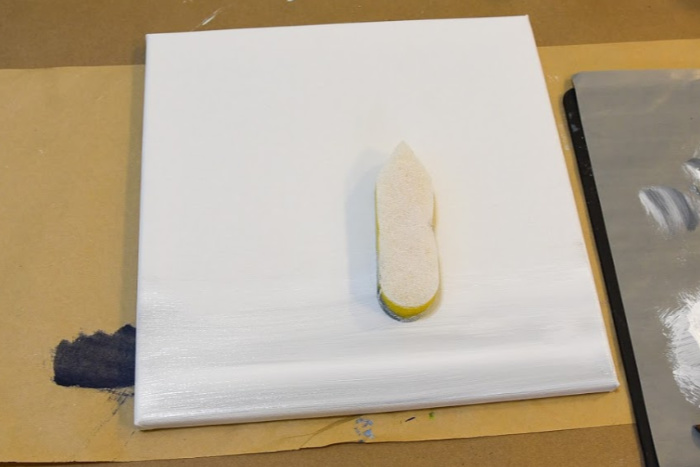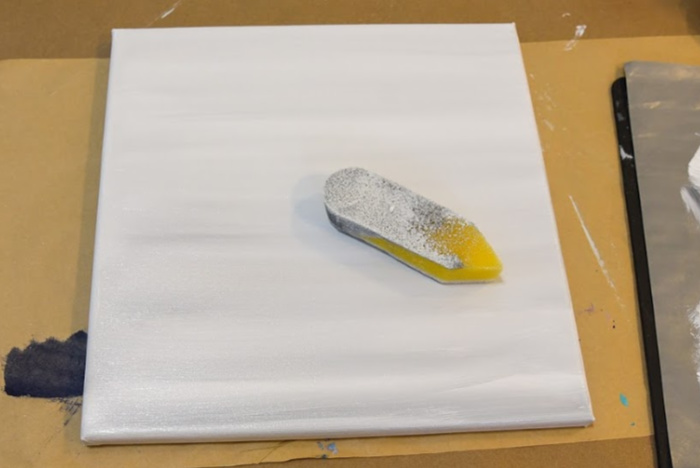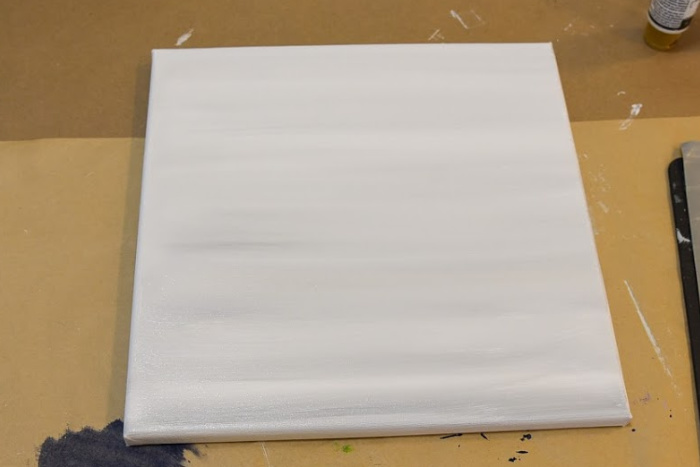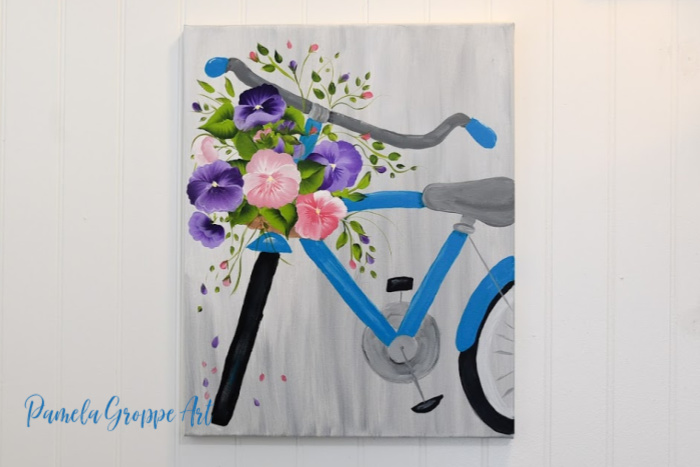Neutral Background Painting in Acrylics
Want to paint an easy background for your painting in acrylics? I have got you covered. This lesson is fast, creates an interesting effect and can be switched out easily with different colors.
Another benefit I like about this is if you use Plaid Folk Art Multi-Surface paint you get a sheen that has less drag when painting on your design.
I used this background painting trick for this free acrylic painting lesson of a bicycle. Note the different shades of gray blended across the canvas for an interesting yet neutral backdrop.

This post contains affiliate links. If you make a purchase after clicking a link I may make a small commission at no added cost to you.
Acrylic Painting Supplies for Background
Paint a Neutral Background in Acrylics

Easy to create background for your acrylic paintings.
Materials
- Canvas or Surface of Choice
- Plaid Folk Art colors:
- Classic French Gray
- Steel Gray
- Wicker White
Tools
- Sponge
Instructions
Place paint colors on paint palette.
Load sponge with Wicker White
Touch slightly into the Steel Gray and Classic French Gray
Drag from top to bottom of canvas with paint loaded sponge creating streaks as you cover canvas with paint.
Add more paint to sponge as needed.
Add more gray or white depending on how dark you want the streaks of color.
Let dry.
Paint your design on the neutral background.
Notes
You can use colors of choice. This works in many different colors.
Start with your surface of choice. I used a 12″ x 12″ canvas from Michaels or here Art Alternatives Canvas for this demo but the bicycle painting is a 16″ x 20″
It is easier to have your surface flat on a table top rather than on an easel so you can apply pressure as needed.
Paint Colors on Palette
Place a large amount of Wicker White on your palette and two smaller amounts of each of the grays.
Be generous with the white as you will be using a lot.
Note: I typically add two additional coats of Gesso to all canvas before starting my acrylic paintings. Even pre-gessoed cotton canvas’ are thirsty and benefit from a couple extra coats. See how I Gesso canvas in this post.

Load the Sponge
First load the sponge with a generous amount of white.
Note: You can use sponge of choice, this one is just easy to hold on too and works best for me. I have only found these sponge painters here.
Then touch into each gray color. (you can use just one gray or mix your own with black and white)
Very small amounts of the grays will go far. Start with less than you need and add to it.

Apply Paint to Canvas
Drag the sponge across the canvas or up and down as I did in the video posted at the end of this article.
You decide how you want it.

Make long strokes from end to end as much as possible. You may need to go over an area a couple times to get the effect you like.

If you get an area to dark or a profound streak you wish to blend in more then add more white and go over it.
The reverse is also applicable. If you get an area too bland add gray and streak it through.

The time it takes to paint these type backgrounds depends upon the size of canvas you are painting. And you can use different sizes of sponge.

For another fun background see How to Paint Faux Wood
See the full length video
Next up the bicycle painting!

Please PIN & Share

Happy Painting!







